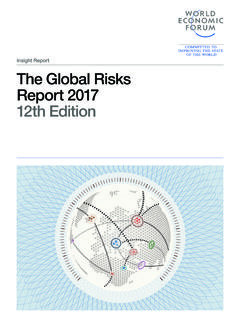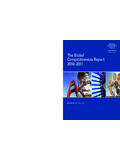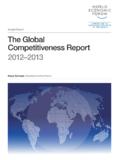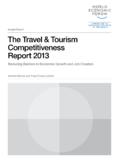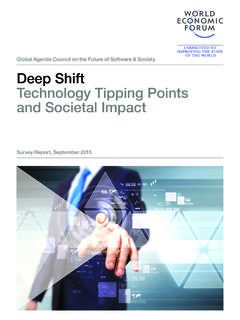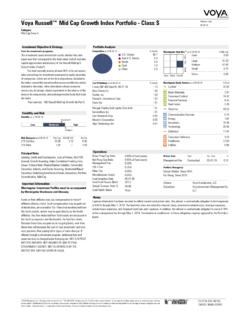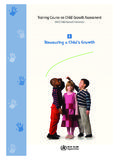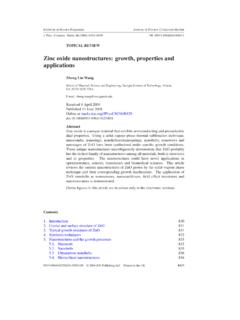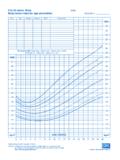Transcription of Insight Report The Inclusive Growth and Development …
1 The Inclusive Growth and Development Report 2017 Insight ReportJanuary 2017 The Inclusive Growth and Development Report 2017 | iii ContentsPrefacev by Richard Samans Executive Summary vii Part 1: Inclusive Growth and Development Rising to the Challenge of Inclusive Growth 01 and Development by Richard Samans, Jennifer Blanke, Gemma Corrigan, Margareta Drzeniek Hanouz Part 2: Data Presentation 47 Selected Country Summaries Inclusive Development Index National Dashboard of Key Performance Indicators Policy and Institutional Indicators How to Read a Country Profile186 Part 3: Methodology and Acknowledgements 92 Methodology of the Benchmarking 92 Framework on Inclusive Growth and Development Technical Notes and Sources 102 Bibliography124 About the Authors 132 Acknowledgements133 The Inclusive Growth and Development Report 2017 is published by the World Economic Forum.
2 Richard SamansMember of the Managing BoardJennifer BlankeChief EconomistMargareta Drzeniek HanouzHead of Global Competitiveness and RisksGemma CorriganPractice Lead, Economic Growth and Social Inclusion InitiativeWe thank Madhur Singh and Andrew Wright for their editing work and Human After All, Moritz Stefaner and Tim Bruce (Lowercase, Inc.) for their excellent graphic design and layout. The terms country and nation as used in this Report do not in all cases refer to a territorial entity that is a state as understood by international law and practice. The terms cover well-defined, geographically self-contained economic areas that may not be states but for which statistical data are maintained on a separate and independent Economic ForumGenevaCopyright 2017by the World Economic ForumAll rights reserved.
3 No part of this publication may be reproduced, stored in a retrieval system, or transmitted, in any form or by any means, electronic, mechanical, photocopying, or otherwise, without the prior permission of the World Economic The full data edition with 109 country profiles and an interactive data platform can be found online at the following address: Inclusive Growth and Development Report 2017 | v Over the past several years, a worldwide consensus has emerged on the need for a more socially- Inclusive approach to generating economic Growth . However, Inclusive Growth and Development remain primarily an aspiration. No systemic framework has emerged to guide policy and practice. The World Economic Forum s System Initiative on Economic Growth and Social Inclusion has taken on this challenge with the release of the Inclusive Growth and Development Report 2017.
4 Building on a beta version of a policy framework released in 2015, this Report provides a practical guide for policymakers and stakeholders seeking to build a strategy to capture greater synergy between economic Growth and more broadly-based progress in living standards in their addition to the Report s policy framework and metrics which provide a comparative illustration of institutional strength and enabling environment conditions in 15 of the most relevant policy domains for Inclusive Growth a new set of national key performance indicators are presented to help countries track progress. These have been compiled into a composite global index, the Inclusive Development Index, measuring the accumulated level as well as the most recent five-year trend of performance for the 109 countries for which such data is available.
5 The former offers a more integrated and holistic picture of the state of economic Development of countries than Gross Domestic Product per capita alone. The latter is useful for governments and stakeholders seeking to assess the effect of changes in policy and conditions within a typical political cycle. Together, the policy framework and benchmarking data are intended to provide countries with the practical tools needed to help turn the ambition of Inclusive Growth into a practical and measurable plan of action. At the same time, they yield several important conclusions for national policy and international economic cooperation, which the Report articulates in considerable depth. These provide the basis for a new global Growth agenda at a time when the world economy sorely needs new Report , and the System Initiative on Economic Growth and Social Inclusion of which it is part, exemplify the World Economic Forum s ambition to serve as a platform to enable closer cooperation between multiple institutions and stakeholders sharing a common aim.
6 We wish to thank the International Labour Organization, International Monetary Fund, Organisation for Economic Co-operation and Development , World Bank, World Trade Organization, Finance Ministry of Canada, as well as Barclays, McKinsey Global Institute, and Microsoft for their thoughtful written contributions to this volume. We also wish to express appreciation to all members of the System Initiative who provided comments and general guidance. The richness of the data found in these pages is also due to the work of numerous public and private , this project benefited immeasurably from the creativity and diligence of Jennifer Blanke, Margareta Drzeniek Hanouz, and particularly Gemma Corrigan, as well as valuable input from Thierry Geiger, Stefan Hall, and Aditi Sara , January 2017 PrefaceRICHARD SAMANS Member of the Managing Boardvi | The Inclusive Growth and Development Report 2017 The Inclusive Growth and Development Report 2017 | vii Around the globe, leaders of governments and other stakeholder institutions enter 2017 facing a set of difficult and increasingly urgent questions.
7 With fiscal space limited, interest rates near zero, anddemographic trends unfavorable in many countries,does the world economy face a protracted period ofrelatively low Growth ? Will macroeconomics anddemography determine the world economy s destinyfor the foreseeable future? Can rising in-country inequality be satisfactorilyredressed within the prevailing liberal internationaleconomic order? Can those who argue that moderncapitalist economies face inherent limitations in thisregard that their internal income distribution system is broken and likely beyond repair be proven wrong? As technological disruption accelerates in the FourthIndustrial Revolution, how can societies organizethemselves better to respond to the potential employmentand other distributional effects?
8 Are expanded transferpayments the only or primary solution, or can marketmechanisms be developed to widen social participationin new forms of economic value-creation?These questions beg the more fundamental one of whether a secular correction is required in the existing economic Growth model in order to counteract secular stagnation and dispersion (chronic low Growth and rising inequality). Does the mental map of how policymakers conceptualize and enable national economic performance need to be redrawn? Is there a structural way, beyond the temporary monetary and fiscal measures of recent years, to cut the Gordian knot of slow Growth and rising inequality, to turn the current vicious cycle of stagnation and dispersion into a virtuous one in which greater social inclusion and stronger and more sustainable Growth reinforce each other?
9 This is precisely what government, business, and other leaders from every region have been calling for. Over the past several years, a worldwide consensus has emerged on the need for a more Inclusive Growth and Development model; however, this consensus is mainly directional. Inclusive Growth remains more a discussion topic than an action agenda. This Report seeks to help countries and the wider international community practice Inclusive Growth and Development by offering a new policy framework and corresponding set of policy and performance indicators for this Framework and MetricsThe ultimate objective of national economic performance is broad-based and sustained progress in living standards, a concept that encompasses wage and non-wage income ( , pension benefits) as well as economic opportunity, security and quality of life.
10 This is the bottom-line basis on which a society evaluates the economic dimension of its country s leadership. Many countries have had difficulty in satisfying social expectations in this regard. For example, in the last five years, annual median incomes declined by in advanced economies, while GDP per capita Growth averaged less than 1%.To borrow from a business concept, Growth can be thought of as the top-line measure of national economic performance, with broad-based or median progress in living standards representing the bottom-line. Inclusive Growth can be thought of as a strategy to increase the extent to which the economy s top-line performance is translated into the bottom-line result society is seeking, , broad-based expansion of economic opportunity and prosperity.
